The two RV Gypsies went to the visitor center to begin their visit to the park and learn the story of the Minuteman Intercontinental Ballistic Missile System and its role in the larger context of the Cold War. Multiple exhibits tell the story of the Minuteman Missile's role as part of the United States policy of nuclear deterrence during the Cold War through artifacts, photographs, films, and interactive displays. Then the two RV Gypsies went to the nuclear missile site itself, Delta-09. |
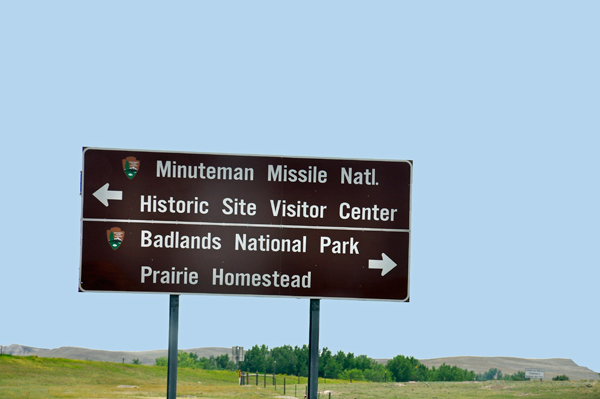 |
 |
 |
The Minuteman Missile National Historic Site Visitor Center features three pillars at the entry to the building to represent the air, sea, and land elements of the nuclear triad. |
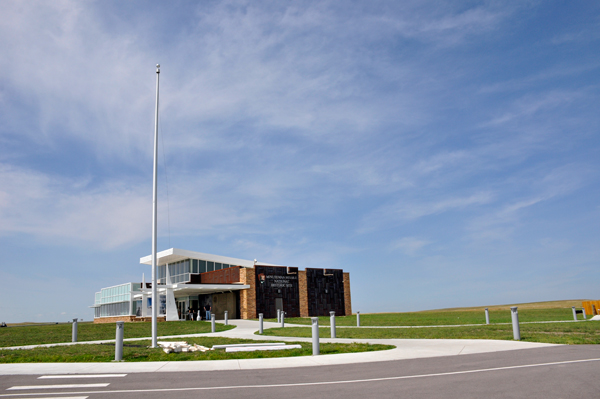 |
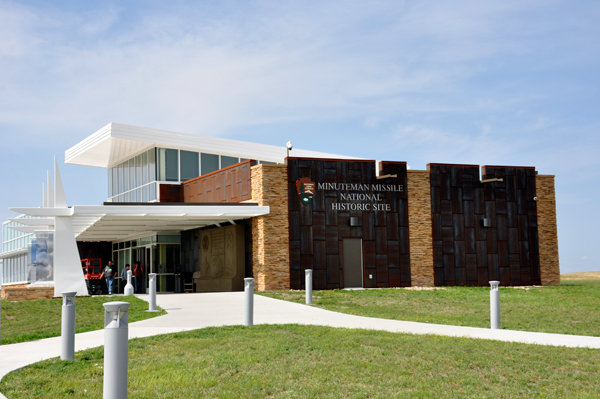 |
Below: Some of the informative
signs inside the Visitor Center |
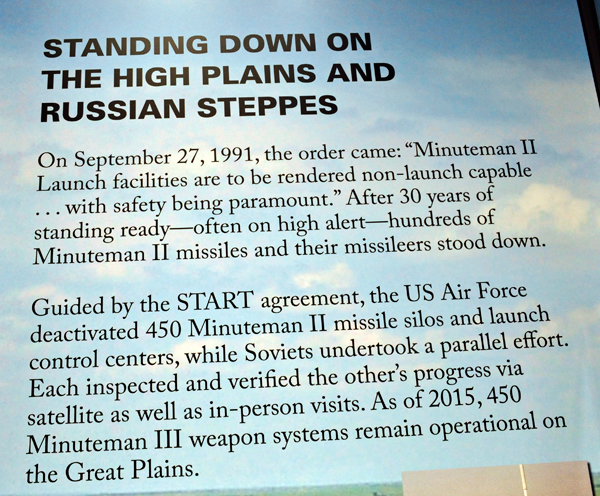 |
As the two RV Gypsies stood
inside the Minuteman Missile Visitor Center, they were also standing
about 5,100 miles from Moscow, 1,400 miles from Washington D.C. and
four miles from a facility that could launch nuclear weapons. The Great
Plains once housed 1,000 intercontinental ballistic missiles targeted
at Russia (The Soviet Union). The Great Plains still harbor launch facilities
for hundreds of missiles. |
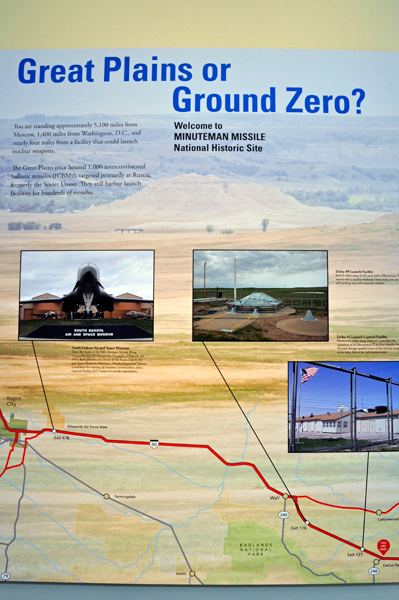 |
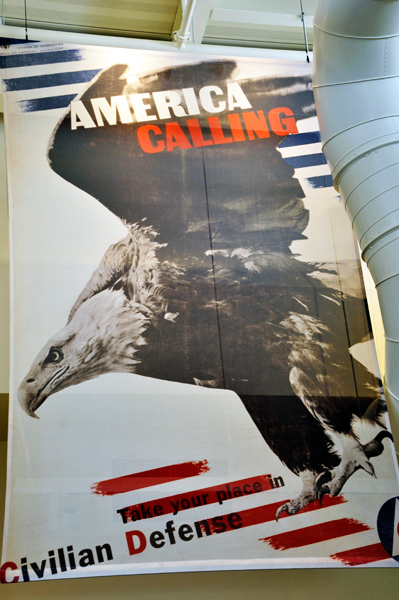 |
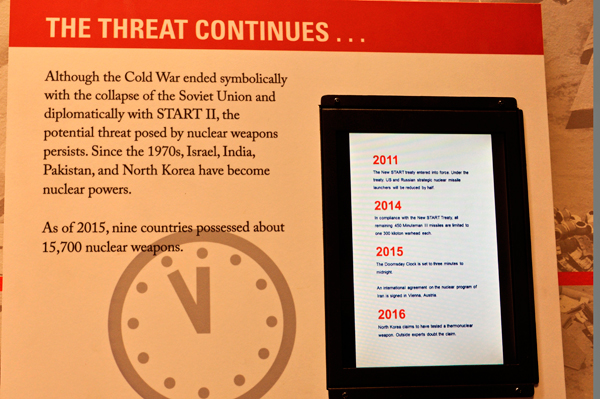 |
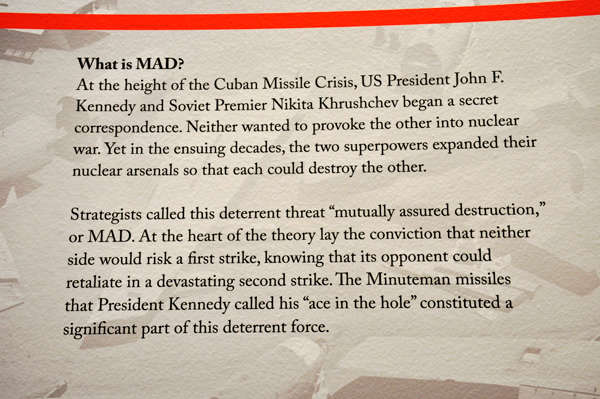 |
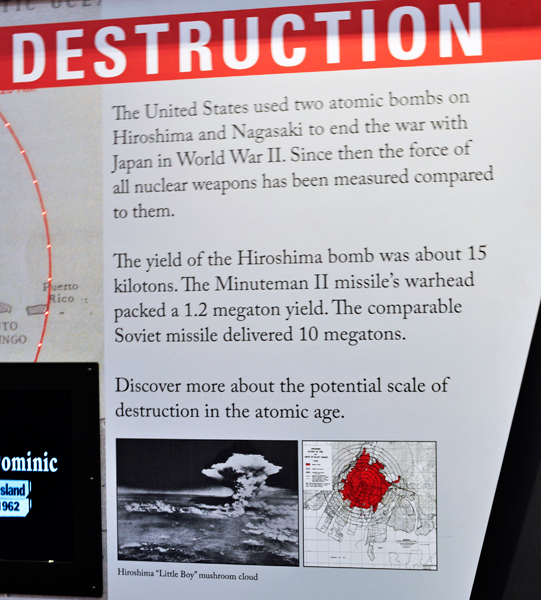 |
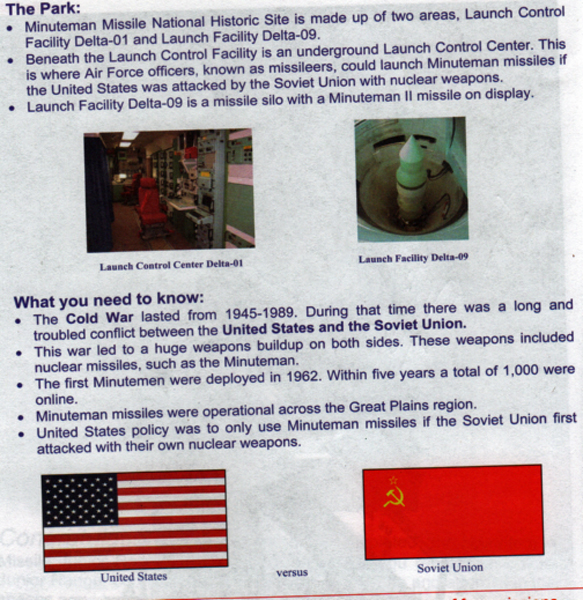 |
 |
The two RV Gypsies arrived at the Launch Facility (Missile Silo) Delta-09, located off of I-90, exit 116 on the south side of the highway. They had to drive on a dirt road for about 1/2 mile to the only fenced structure in the area. |
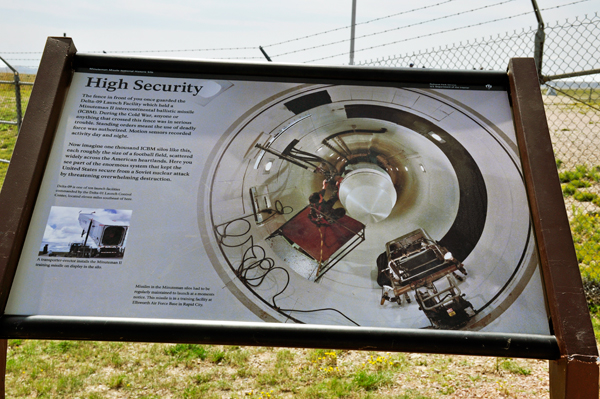 |
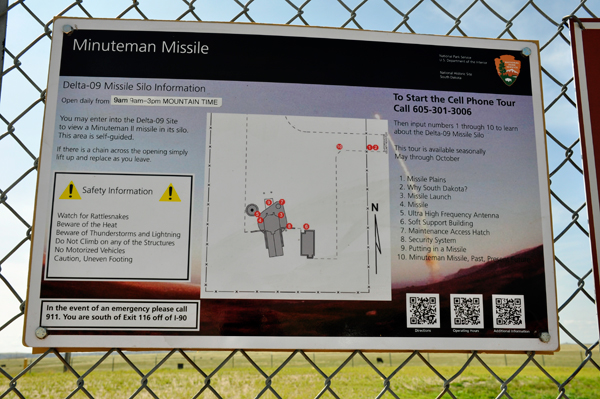 |
From 1963 until the early 1990s, the missile silo at Delta-09 contained a fully operational Minuteman Missile, bearing a 1.2 megaton nuclear warhead. The Delta-09 missile silo was one of 150 spread across western South Dakota. In total there were 1,000 Minuteman's deployed from the 1960's into the early 1990's. Visitors can now tour the site on their own.
The launch facility consists of a silo 12 feet in diameter and 80 feet deep made of reinforced concrete with a steel-plate liner. The door to the silo has been welded and fitted with a glass roof, and an unarmed missile placed inside. For safety reasons, tours are not conducted underground. In addition to the missile and silo, visitors will see support structures such as antennas and motion sensors. |
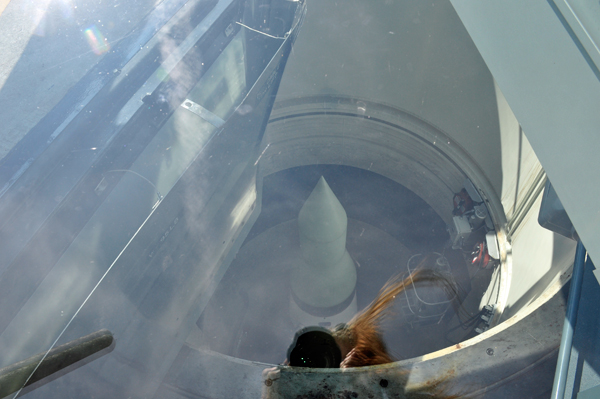 |
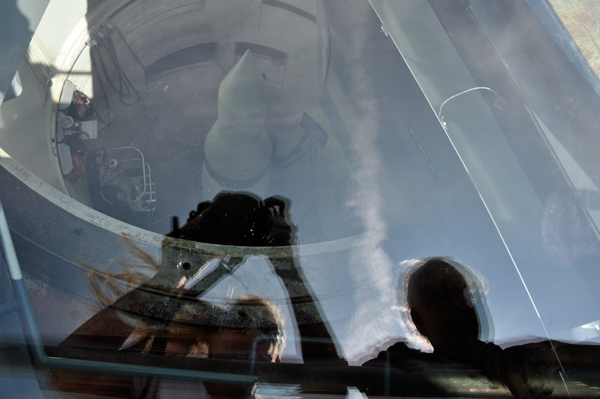 |
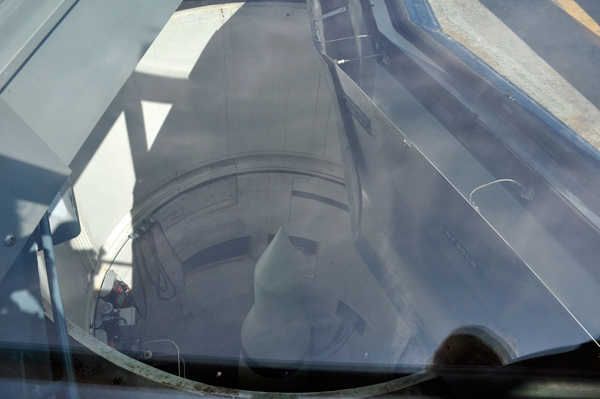 |
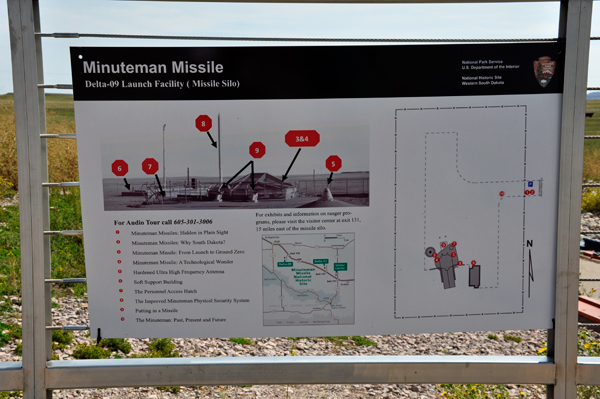 |
Below: The Personnel Access
Hatch and the Security Pit Vault.
The Personnel Access Hatch allowed maintenance crews to access the
support rooms below. It also allowed crews to access the missile without
opening the larger 90 ton blast door above the missile. In the photos
below, the small round blue security pit vault held part of the controls
that allowed the personnel access hatch to be opened. |
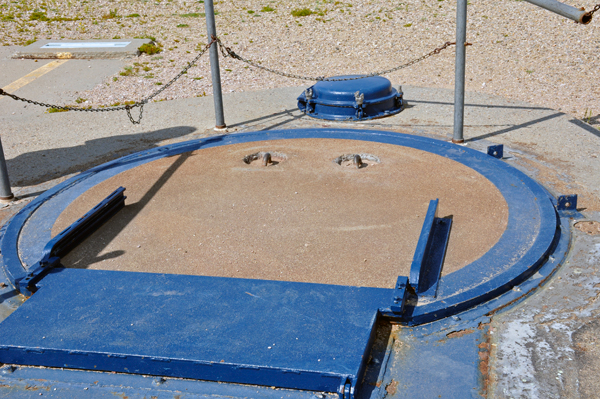 |
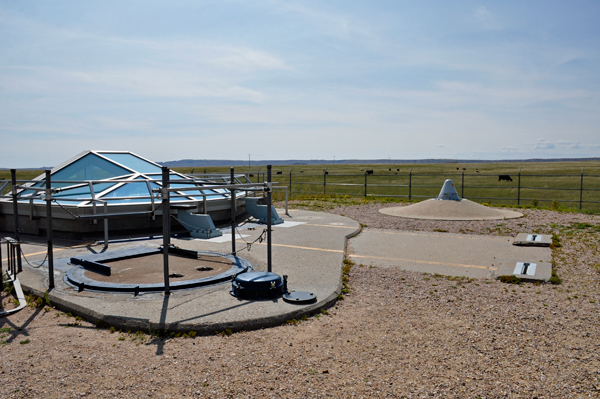 |
To access the underground portion of the silo, there had to be two personnel in line in sight of each other at all times. The 90 ton blast door could be opened slowly for maintenance or missile placement by using the track and gear system on the back side of the silo. However, in the event of a launch, the door would have been ripped off the silo with the use of explosives. The door could have slid far beyond the cyclone fence that protected the silo, allowing the missile to have clear exit. |
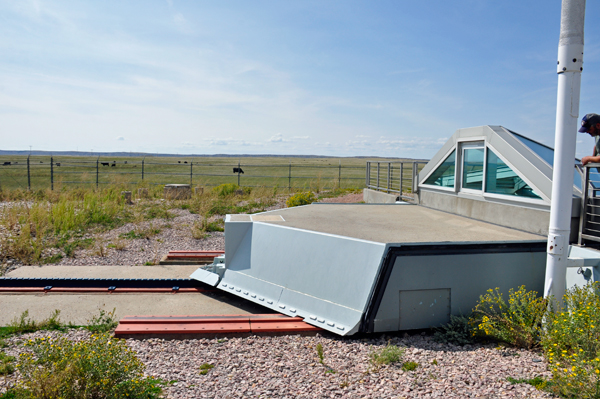 |
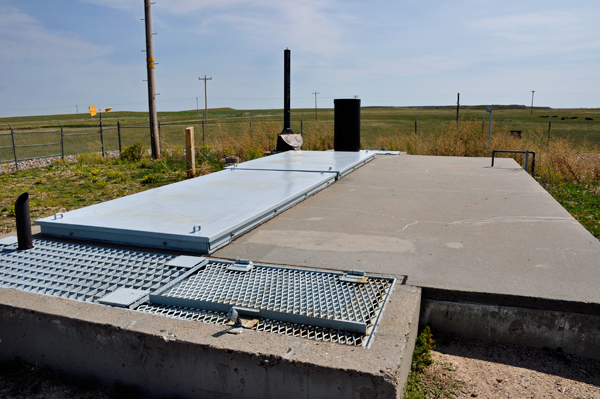 |
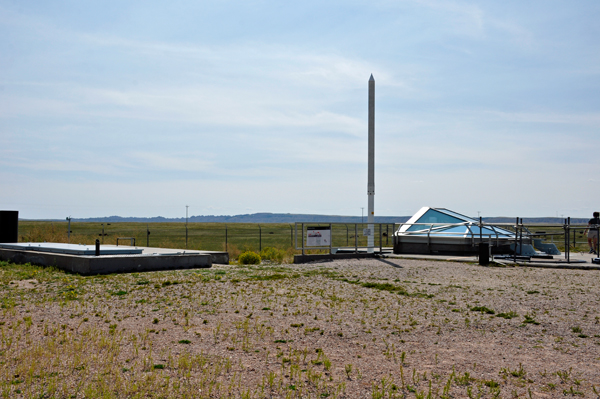 |
There were 150 silos Located in South Dakota during the Cold War. They were man-less sites surrounded by 8-foot tall cyclone fences topped with barbed wire. Inside concrete and metal structures housed and protected the Minuteman missiles. |
Information above credited to NPS and visitor center brochures. |



















































